
Alright, fellow road warriors, let’s get real for a moment. We’ve all been there, cruising along, maybe singing along to our favorite tunes, feeling pretty confident behind the wheel. But here’s the kicker: even the most seasoned drivers among us are, well, only human. And as the saying goes, people are bound to make mistakes when driving.
It’s not just a minor annoyance; it’s a major safety concern. A staggering 99% of all accidents on roads and highways are caused by human error. Think about that for a second! Yet, many of us continue to make the same blunders repeatedly, sometimes without even realizing we’re doing it. Whether it’s out of habit, a momentary lapse in awareness, or simply being a bit indifferent to the other vehicles around us, these repeated mistakes can lead to serious trouble.
No wonder engineers and scientists are hard at work developing self-driving cars that will take human error out of the equation. But until those robo-cars become our everyday reality, it’s up to us to sharpen our skills and ditch those dangerous habits. We’re diving deep into some of the most common driving mistakes people make, and trust us, becoming aware of them is the first huge step toward safer travels for everyone. Let’s buckle up and get enlightened!
1. Tailgating
Ah, tailgating – the quintessential aggressive driving move that gets everyone’s blood pressure rising. This dangerous habit involves drivers following too closely behind the vehicle in front, shrinking that crucial buffer zone. It’s not just annoying; it’s a recipe for disaster, and unfortunately, it’s a habit we see far too often on the road.
Many drivers simply don’t realize how little time they would have to stop if the vehicle in front of them suddenly slammed on its brakes. Tailgating reduces reaction time, limits visibility, and significantly increases the risk of rear-end collisions. These types of accidents are among the most common, and they often result from this exact mistake.
The good news? Preventing a rear-end collision is often as simple as giving yourself some space. The safe following distance should be at least 2-3 seconds, and even more if you’re dealing with poor weather conditions like rain or snow. Maintaining this distance gives you the precious seconds you need to react and maneuver if something unexpected happens ahead.
It’s also worth remembering that tailgating isn’t just rude; it’s illegal in most states, potentially resulting in fines and even license points. So, next time you feel the urge to creep up on someone’s bumper, take a deep breath, ease off the gas, and give everyone — including yourself — the room needed to stay safe. Your car (and your insurance premium) will thank you.
Read more about: Beyond the Legends: 15 Affordable Classic Pontiacs Every Enthusiast Should Consider for Their Garage
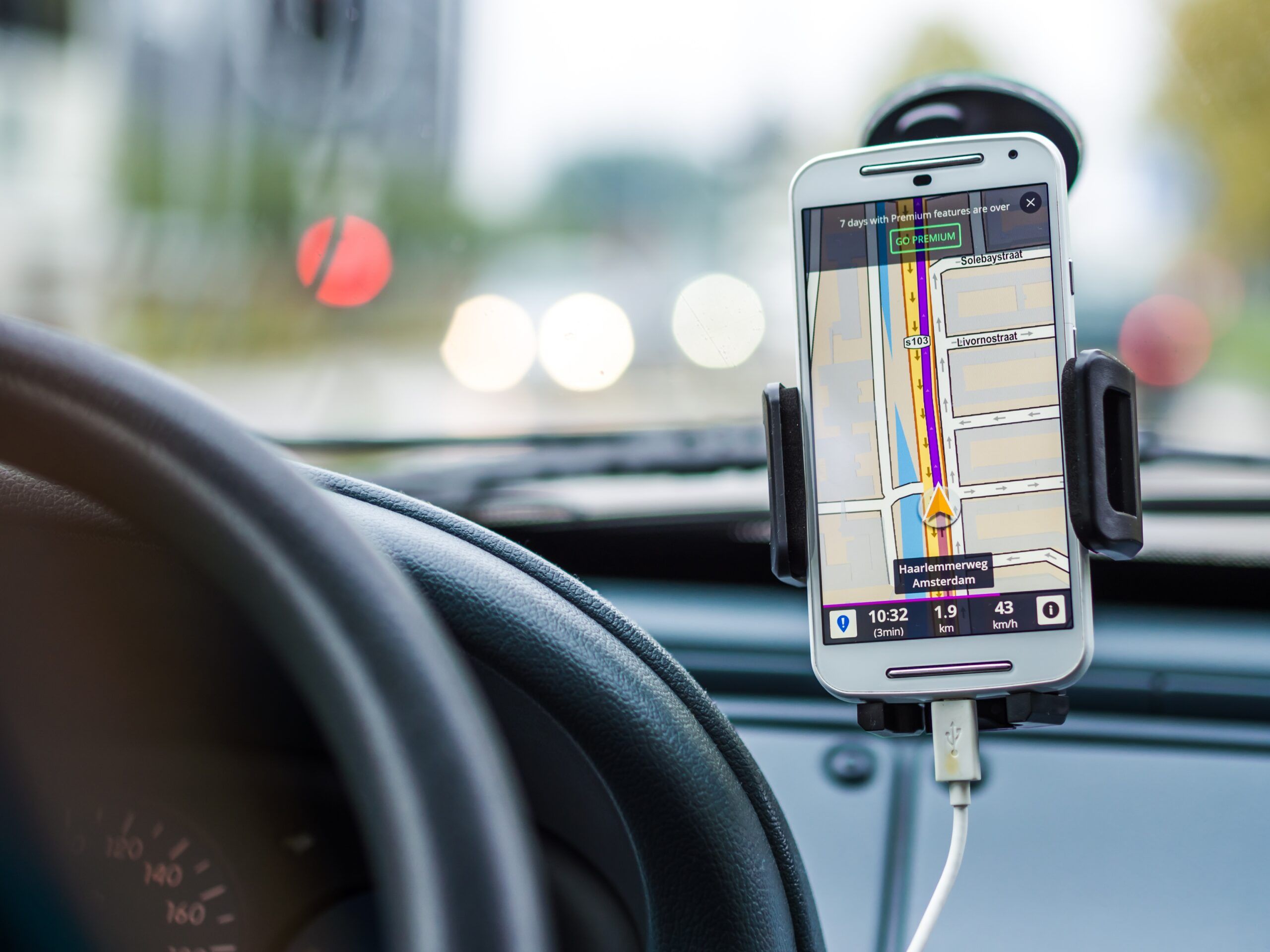
2. Distracted Driving
Let’s face it: in our hyper-connected world, distracted driving remains a major safety concern, and its consequences are grim. Approximately nine fatalities occur daily in the U.S. due to this dangerous behavior. It encompasses anything that diverts your attention from the road, turning what should be a routine drive into a high-stakes gamble.
The most common culprits are probably no surprise: texting, scrolling through social media, fiddling with your GPS, and yes, even eating. What makes this mistake particularly risky is how quickly it can lead to disaster. Taking your eyes off the road for just five seconds at highway speed is equal to driving blindfolded. Imagine driving blindfolded for the length of a football field — terrifying, right?
While this affects drivers of all ages, the statistics are particularly concerning for a specific group: drivers aged 20-39 are responsible for 42% of distracted driving incidents. And if you needed more incentive to put your phone down, consider this chilling fact: texting while driving is particularly dangerous, being six times more likely to cause a crash than drunk driving.
The solution is straightforward, even if it feels tough in the moment. To avoid becoming another statistic, drivers must make a conscious habit of putting their phones out of reach. Set up your navigation before you even start the car, and resist the urge to multitask. Focused driving is a must, especially when you’re driving at such a high speed. Your full attention to the road and other drivers is required, always.
Read more about: 12 New Cars Named ‘Best Buys’ for 2025: An Expert Guide for Savvy Shoppers
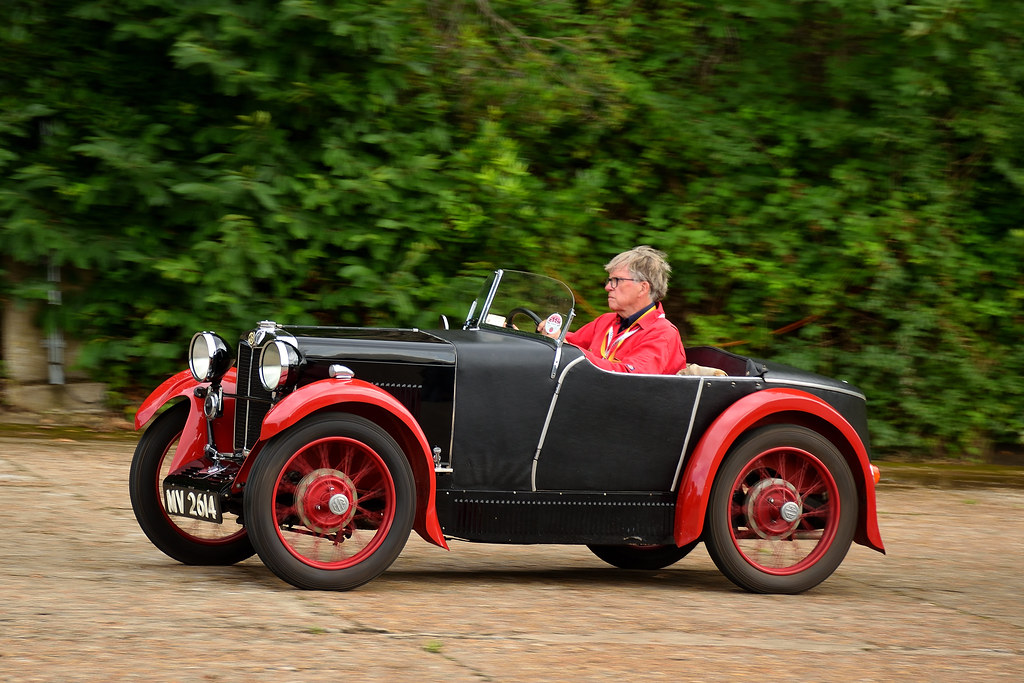
3. Speeding
Feeling the need for speed? We get it. Sometimes you’re running late, sometimes the open road just calls to you. But here’s the cold, hard truth: speeding remains a major contributor to car accidents around the world. Many drivers underestimate the sheer danger of driving even a few kilometers over the limit, especially when they’re in a rush.
The physics are undeniable: the faster you drive, the less time you have to react. This means that if something unexpected happens—a sudden brake light ahead, a deer darting out, or even just a quick shift in traffic—you have significantly less opportunity to respond safely. And if something does go wrong, the impact will be far more severe, increasing the chances of fatal collisions.
Consider the impact of speed in residential areas: at 30 mph, the fatality rate jumps to 40%, compared to just 5% at 20 mph. While this specific statistic applies to neighborhoods, the principle holds true everywhere. Even in ideal conditions, high speeds can turn a minor mistake into a fatal collision. It’s not just about getting a ticket; it’s about the fundamental safety of everyone on the road.
The key to avoiding this mistake is simple: slow down. Seriously. Follow the posted speed limits, especially in residential areas or poor weather conditions. Plan ahead so you’re not tempted to rush. Arriving a few minutes later is far, far better than not arriving at all. Embrace cruise control to help you maintain a proper speed and ditch the drag-racing mentality.
Read more about: Mechanics’ Top Frustrations: 14 Bad Car Habits You Need to Stop Now to Save Money and Your Vehicle’s Life

4. Not Using Your Turn Signal
Confession time: how many times have you been annoyed by a driver who suddenly swerves into your lane with no warning? Or been caught off guard by a car turning without any indication? It’s a widespread issue, and honestly, it’s a wonder we even have turn signals in our cars given how few of us consistently use them.
Here’s the thing: turn signals aren’t just decorative lights; they are important safety features that inform other motorists around us what our intentions are. When you signal, you’re alerting other drivers of your next move, which gives them crucial time to accommodate you, whether you’re turning a corner or changing lanes. Without that heads-up, drivers behind and beside you are forced to react at the last second, with no warning. And that, folks, is how accidents happen.
The statistics are pretty eye-opening: drivers neglect to signal when changing lanes 48% of the time and when turning 25% of the time. This seemingly minor oversight causes over two million accidents annually, a figure that’s more than twice the number attributed to distracted driving. Yes, you read that right – neglecting a simple flick of a lever can have massive, dangerous consequences.
Proper driver etiquette dictates that people use their turn signals whenever they are turning or changing lanes. Make it a habit, even if you think there’s no one behind you – you never know who might be in your blind spot. Just be sure to turn off the signal once you make your move; it’s pretty annoying to drive behind people who have left their turn signal blinking for an extended period when they are not actually turning.
Read more about: Carrie Ann Inaba’s Emotional Absence: Unpacking Her Health, the DWTS Family’s Support, and What Lies Ahead for Season 34’s Premiere
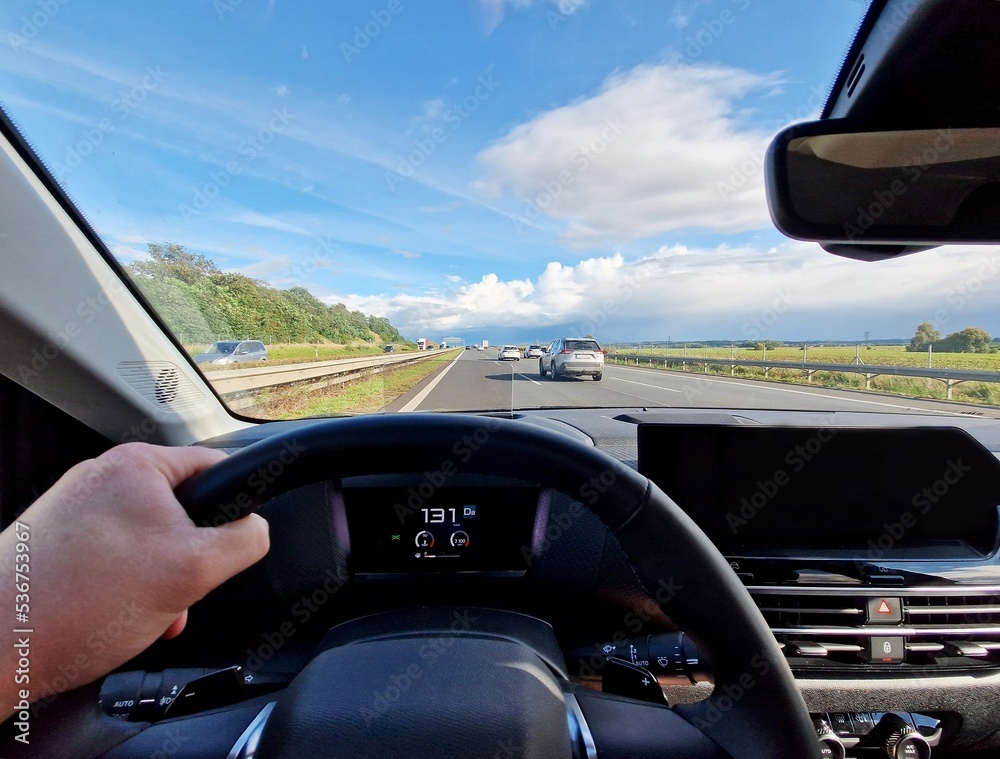
5. Driving Slowly In The Passing Lane
Oh, the dreaded slowpoke in the passing lane. We’ve all cursed them – the people who drive slowly in the left-hand lane on a highway, seemingly indifferent to the fact that they are blocking up traffic behind them. This practice is not only annoying as hell, it’s also genuinely dangerous, and it’s a prime example of how inconsiderate driving can lead to accidents.
When faster traffic gets stuck behind a slow vehicle in the passing lane, it creates frustration and forces other drivers to make risky maneuvers. This can lead to impatient drivers speeding in the slower, right-hand lanes and trying to pass other cars on the inside lane, creating chaotic and hazardous conditions. It impedes traffic flow and creates dangerous situations for everyone.
It’s a fundamental rule of highway driving: the lanes to the right are for slower moving vehicles, and the lanes on the left are generally for faster driving cars, particularly for passing. The key is to figure out which lane you’re most comfortable driving in based on the speed you’re traveling at. If you’re not actively overtaking other vehicles, you should always move right.
Driving in the fastest lane when you’re clearly not going the speed limit, or can see a long line of cars behind you with drivers’ faces contorted in rage, is the height of inconsideration. That honking you’re hearing isn’t personal; it’s telling you to move over to the right lane. In fact, many states have implemented “slow poke” laws, allowing police to ticket drivers who linger in the left lane without passing. So, save yourself a fine and everyone else some stress – keep the passing lane clear.
Read more about: From Dust to Dollars: Record-Breaking Classic Cars Unearthed from Barns and Forgotten Garages

6. Not Adjusting The Mirrors Properly
Your car’s mirrors aren’t just there for vanity or decoration; they are critically important instruments that help you see what is behind you and on either side of your vehicle. Yet, a majority of drivers motor around with their mirrors out of position and not adjusted properly. This seemingly small oversight can have big, dangerous consequences on the road.
When mirrors aren’t set correctly, people cannot adequately see the cars coming up behind them or alongside them. Poor positioning of side mirrors is particularly bad, as it can lead to a slew of accidents as people switch lanes without seeing another car right beside them. While there will always be a “blind spot” in side mirrors, the problem is amplified when the mirror is adjusted so poorly that drivers are looking at their own door handle rather than the cars driving alongside them.
So, what’s the pro tip for optimal mirror adjustment? Best practice is to always take a moment when you first get into your car to adjust all the mirrors to the right position. For your side mirrors, the proper technique is to lean left and adjust the driver’s mirror to barely see the car’s side. Then, lean right to set the passenger mirror similarly. This method significantly eliminates most blind spots and vastly improves safety when changing lanes. You’ll be able to see more of the road and less of your own car.
By angling the side mirrors out so you don’t see your own car at all, you’ll eliminate the blind spot almost completely. This simple adjustment only takes a few seconds but makes a monumental difference in your awareness of your surroundings. It’s about maximizing your field of vision and minimizing surprises, which is crucial for safe driving.
Read more about: Ditch the Drama: Your Guide to 12 Bikini Blunders and How to Slay Your Summer Style
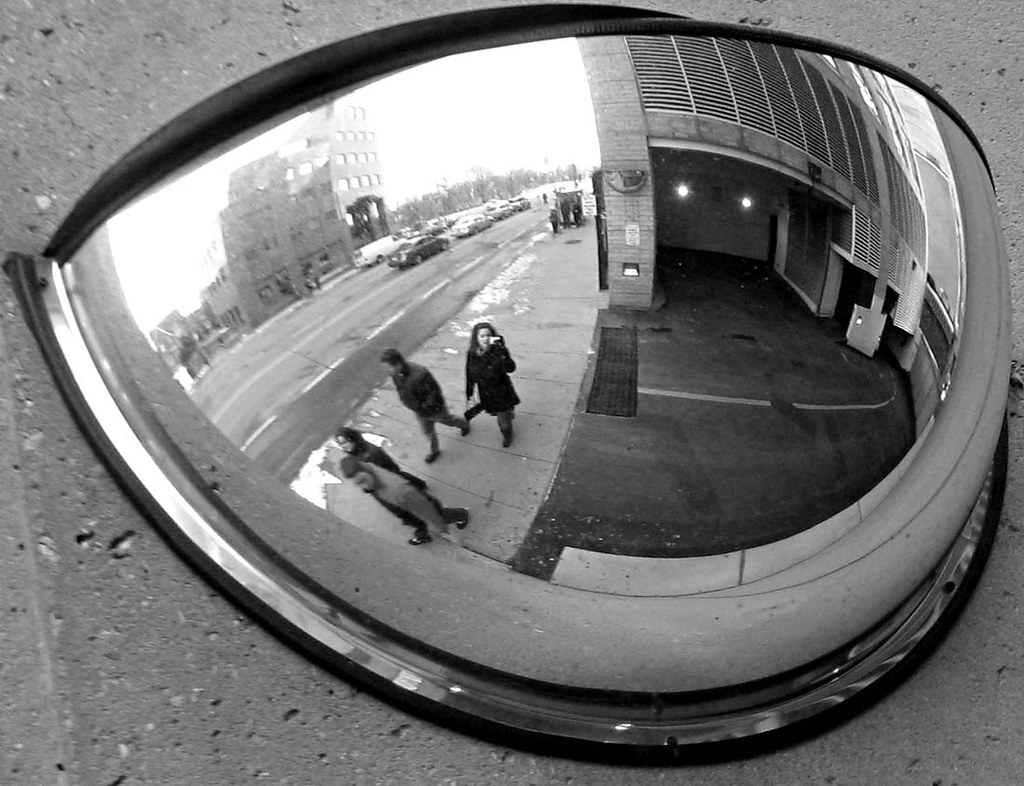
7. Ignoring Blind Spots
Even with perfectly adjusted mirrors, there are still areas around your vehicle that simply can’t be seen. These are your infamous blind spots, and failing to check them before changing lanes or merging is a dangerous habit of bad drivers. Ignoring these hidden zones can lead to sudden, scary, and often costly incidents.
Blind spots are essentially areas around a vehicle that are obscured from view, hiding other vehicles, cyclists, or pedestrians that might be lurking just outside your peripheral vision or mirror’s reach. Neglecting to physically turn your head and look can lead to devastating sideswipe collisions or even fatal accidents, especially at highway speeds when traffic is moving quickly.
Many drivers mistakenly assume their mirrors cover everything, but even the best-positioned mirrors have their limits. This is why the “shoulder check” is so critically important. It’s that quick glance over your shoulder, confirming that the path is clear before you commit to a lane change or turn. This split-second action can literally save lives, preventing you from crashing into a vehicle you simply couldn’t see in your mirrors.
To further enhance safety, some drivers opt for installing special blind spot mirrors. These affordable, easy-to-add convex mirrors can be attached to your side-view mirrors, making it much easier to see other vehicles that are in the lane next to you. However, even with these aids, always perform a quick shoulder check to ensure safety. It’s a simple, non-negotiable step that should be part of every lane change you make.
Alright, road warriors! We’ve already had a serious chat about the first seven common driving blunders that can turn your commute into a cringe-worthy compilation. From tailgating like a pro to mastering blind spot checks, we’ve tackled major safety game-changers. But guess what? The highway jungle is full of more sneaky pitfalls, and we’re about to expose seven more pervasive mistakes drivers make, often without even realizing it! Get ready to level up your road wisdom, because we’re diving deep into some simple strategies that will totally revolutionize your driving habits for smoother, safer journeys. Buckle up, because it’s time to get enlightened and totally crush these common errors!
Read more about: 14 Powerful Books to Reshape Your Mindset: Strategies for Success, Resilience, and Unlocking Your Full Potential
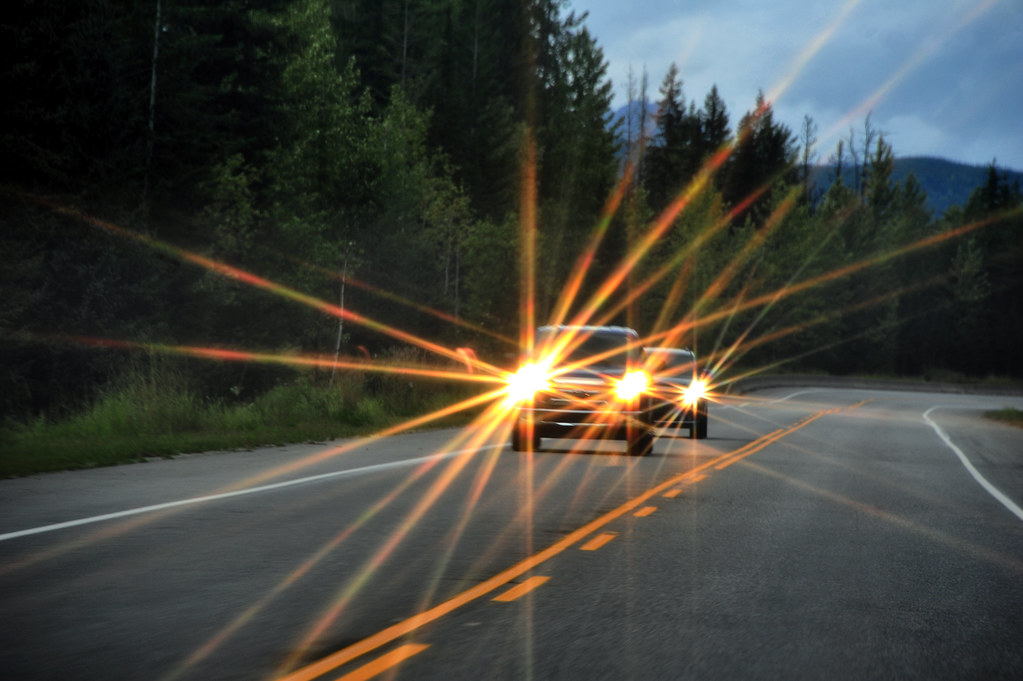
8. Leaving Your High Beams On
Picture this: you’re cruising down a dark, winding road, maybe late at night, and those glorious high beams are lighting up everything like it’s daytime. They’re absolutely essential for seeing potential hazards when there’s no street lighting, giving you that crucial visibility on unlit stretches. It feels like you’ve unlocked a superpower, doesn’t it? But here’s the kicker: this superpower comes with a serious responsibility, and forgetting to dim those brights when other cars show up is a major no-no that happens way too often!
Blinding other drivers isn’t just a minor annoyance; it’s a genuine safety hazard. High beams can temporarily disorient oncoming motorists, making it difficult for them to see the road or even causing them to swerve. And if you’re behind someone, those piercing lights reflecting in their rearview mirror are a massive distraction, increasing their stress and your risk of a rear-end collision. It’s like someone flashing a strobe light in your face – totally uncool and unbelievably dangerous when you’re hurtling down the highway.
The golden rule for high beams is super simple and, honestly, a total lifesaver: if you spot another vehicle’s headlights approaching in the distance, or if you can see the taillights of a car in front of you, *dim those high beams immediately*! The general guideline suggests switching to low beams within 150 meters (about 500 feet) of an approaching vehicle. Plus, using high beams in adverse weather like dense fog or heavy snow can actually make things worse by creating blinding glare. So, keep an eye on your dashboard for that little blue indicator light – it’s your gentle reminder that your high beams are on, and knowing when to flick them off could literally prevent a major accident.
Read more about: The Vanguard of Safety: 15 Hybrid Models Earning Top IIHS and NHTSA Accolades for 2024-2025

9. Riding The Brakes
Unless you’re auditioning for a spot on a Formula One pit crew, there’s absolutely no reason to “ride the brakes” in your everyday driving. This isn’t some secret pro-driver technique; it’s actually a super nasty habit where some folks keep their left foot perpetually hovering over the brake pedal while their right foot handles the gas. Talk about confusing your car! It’s an unconscious mistake that can have very conscious, and costly, consequences.
This two-footed dance often leads to accidentally applying both the brake and gas pedals simultaneously for a few seconds, especially when you’re just chillin’ at a red light or a stop sign. Not only does this bizarre maneuver put unnecessary strain on your vehicle’s components, but it’s also a surefire way to wear out your brake pads and rotors at an alarming rate. Hello, expensive and premature repairs! Your mechanic will either love you (for the business) or sigh dramatically (for your driving habits).
Beyond the hit to your wallet, this practice creates an incredibly unpredictable driving experience for everyone else on the road. When your car is constantly jerking or subtly slowing down without clear intention, drivers behind you struggle to anticipate your next move. This lack of predictability dramatically increases the risk of fender-benders and more serious rear-end collisions. Your driver’s education teacher was a stickler about using only your right foot for *both* braking and accelerating for a very good reason. It builds consistency, improves reaction time, and ensures you’re not accidentally causing chaos.
Read more about: Mechanics’ Top Frustrations: 14 Bad Car Habits You Need to Stop Now to Save Money and Your Vehicle’s Life

10. Bad Seating Position
Okay, let’s be real for a moment: we all have our “perfect” driving position. Maybe you’re a lean-backer, a slouch-extraordinaire, or perhaps you prefer to be practically hugging the steering wheel. You feel comfortable, and that’s all that really matters, right? *Wrong!* While personal comfort is important, a bad seating position is a common, often overlooked, mistake that can seriously compromise your control of the vehicle. And when we’re talking about high-speed highway driving, compromised control is a recipe for disaster!
If your legs are practically stretched out to infinity and beyond, with your feet barely skimming the gas or brake pedals, your reaction times are going to be sluggish. We’re talking about those critical split-seconds needed to avoid a sudden obstacle or a panic stop. Being too far back also means you might not have the optimal leverage or strength to make quick, precise steering adjustments, which is vital in emergency situations. Plus, being *too* comfortable can actually lull you into a daze, making you less attentive to everything happening around you on the road.
Want to drive like a true pro? Take a leaf out of professional race car drivers’ books! They sit upright, close enough so their arms have a slight bend at the elbow when their hands are on the wheel (recommended 9 and 3 o’clock positions, not the old 10 and 2!). Their legs are positioned to easily reach and firmly press the pedals without hyperextension. This posture maximizes control, responsiveness, and maintains alertness. Sitting properly in your car, with two hands on the wheel, ensures you are always alert and capable of reacting quickly, which could literally be the difference between a safe journey and a serious accident.
Read more about: 15 Classic Cars You Might Want To Skip: An Expert Guide for Discerning Collectors

11. Using Your Daylights At Night
Daytime running lights (DRLs) are a fantastic safety feature, designed to make your car more visible to others during daylight hours. They’re pretty much standard on every car rolling off the assembly line today, and for good reason! However, this awesome feature has inadvertently led to a common and super dangerous mistake: many drivers assume their DRLs are good enough for night driving, and that, my friends, is a spectacularly wrong assumption to make!
Here’s the plain, unvarnished truth bomb: your DRLs are specifically designed to be *dimmer* than your actual headlights (the ones we often call “nightlights”). Even more critically, when only your DRLs are on, your taillights are often *not* illuminated. Let that sink in for a second. If your taillights aren’t on, your car is essentially a stealth vehicle to anyone driving behind you in the dark or in poor visibility conditions! This drastically increases the risk of being rear-ended, especially on highways where speeds are higher and reaction times are crucial.
It’s an easy fix, and honestly, there’s no excuse for getting this one wrong. As soon as dusk starts to settle, or whenever visibility drops due to rain, fog, or heavy clouds, make it an absolute habit to turn on your proper headlights. It’s usually just a simple flick of a lever, often only one notch to the left on your control stalk, and it takes less than a second. This tiny action illuminates both your headlights and your taillights, transforming your car from a potential ghost into a clearly visible, safe presence on the road. Don’t be that driver who makes others play a guessing game in the dark.

12. Crossing Lanes While Turning
Have you ever been at an intersection, patiently waiting to turn, when suddenly the car next to you swings wide into *your* lane mid-turn? Or maybe you’ve been guilty of it yourself? It’s a classic, surprisingly common mistake, and let us tell you, “crossing lanes while turning” is not only incredibly annoying but also genuinely dangerous and can lead to some seriously costly collisions. This isn’t some fancy driving technique; it’s a blunder waiting to happen!
The core problem here is trying to do too much at once. When you’re attempting to turn a corner *and* change lanes simultaneously, you’re essentially juggling too many variables in a high-risk environment. Your focus is split, your spatial awareness can be compromised, and you’re dramatically increasing the chances of colliding with other vehicles that are legitimately in those adjacent lanes – whether they’re also turning or simply driving straight through the intersection. It’s a recipe for chaos and confusion, forcing other drivers to make sudden, unexpected adjustments.
The correct (and infinitely safer) practice is super straightforward: execute your turn within your own designated lane first. Once your turn is smoothly completed and your vehicle is straightened out, *then* you can signal your intention to change lanes (yes, those magical blinking lights again!) and carefully merge when it’s safe to do so. This two-step process eliminates ambiguity and gives everyone around you clear signals of your intentions, allowing them to react accordingly. Making this one simple adjustment might seem small, but it can have a world of good and a massively positive impact on road safety.
Read more about: The Hidden Hazards: 12 Common Driving Laws You’re Likely Breaking Without Realizing It
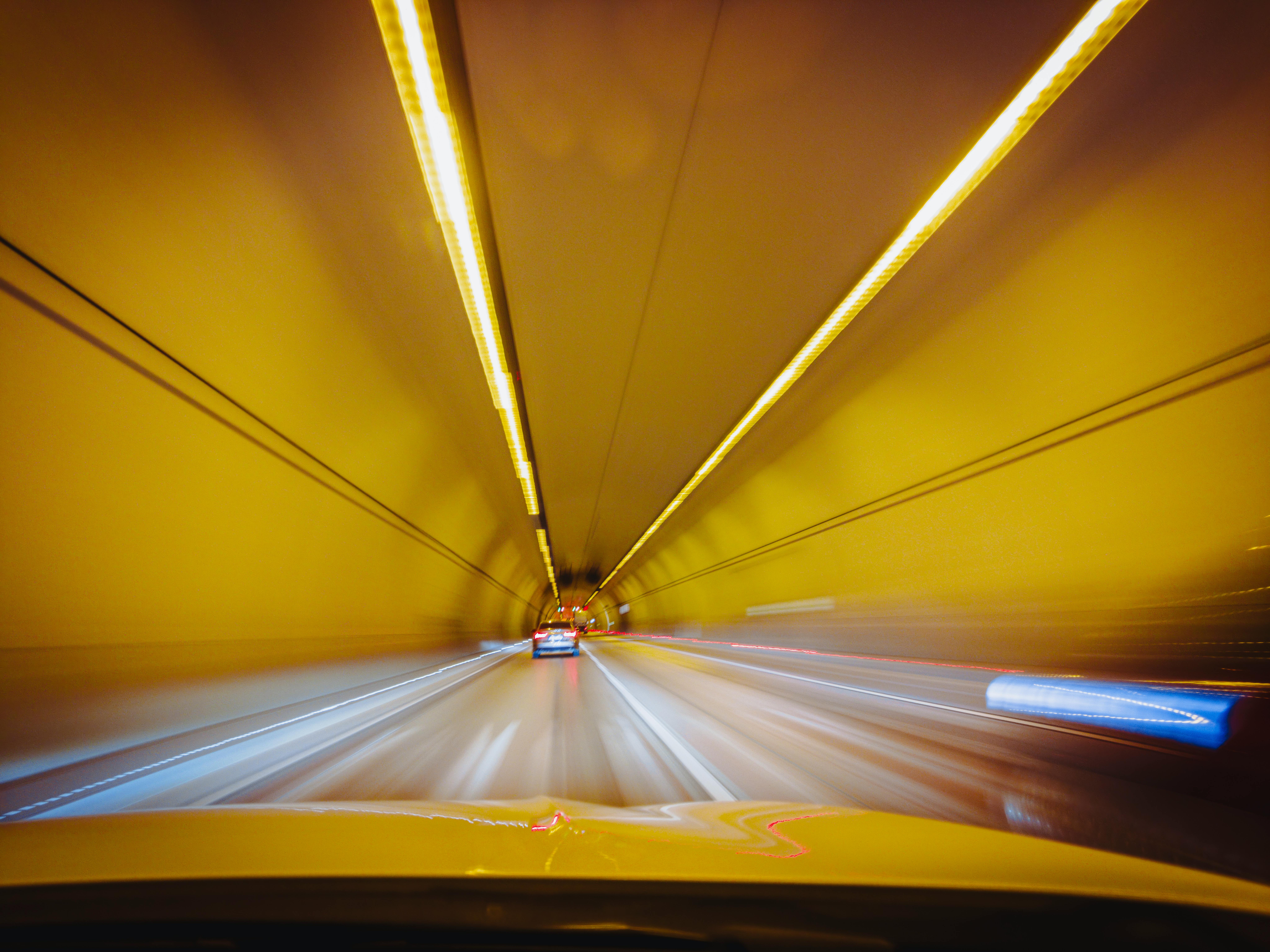
13. Speed Through A Yellow Light
We’ve all been there: you’re approaching an intersection, the light flicks from green to yellow, and for a split second, your brain defaults to “hit the gas and make it!” mode. It feels like a high-stakes game of chicken against the traffic light, especially in places like the U.S. and Canada, where zipping through a yellow light to avoid waiting at a red one seems to have become an unofficial national sport. But let’s cut to the chase: this “sport” is profoundly dangerous and needs to be retired immediately!
Let’s clarify something fundamental: a yellow light is not a challenge to see how fast you can go. It unequivocally means “slow down and prepare to stop,” not “floor it and pray you don’t get T-boned!” The statistics are grimly clear: nearly every single collision you witness at an intersection involves someone who decided to speed through a yellow light and, predictably, ended up getting slammed from the side. That horrifying crunch of metal and shattering glass is often the direct consequence of someone trying to save a minuscule amount of time – usually about 90 seconds. Is that tiny fraction of your life truly worth the risk of a catastrophic accident?
The answer, dear drivers, is a resounding and emphatic NO. It is always, always best to be cautious, patient, and predictable. When that light turns yellow, gently ease off the gas, apply your brakes smoothly, and come to a complete, controlled stop behind the white line. Waiting patiently at a red light until it turns green again is a small, insignificant price to pay for your safety, the safety of your passengers, and the well-being of every other motorist, cyclist, and pedestrian on the road. Don’t play roulette with your life or anyone else’s.
Read more about: From Anemic to Awkward: Unmasking 15 Muscle Cars That Truly Missed the Mark – And Why We Can’t Forget Them

14. Stop Suddenly Without Warning
Okay, moment of truth: how many of us have been leisurely driving along, suddenly spotted an irresistible parking spot, or (even better!) that beacon of deliciousness, the “Hot Doughnuts Now” sign at Krispy Kreme, and instinctively slammed on the brakes without so much as a thought for those behind us? It’s a universal reflex, but oh-so-dangerous! This abrupt, unannounced stop is not just an inconvenience; it’s one of the biggest highway blunders and a leading cause of rear-end collisions, consistently ranking high on the list of accident culprits.
Here’s the unvarnished reality check: that car that was cruising a safe distance behind you (or, let’s be honest, maybe even annoyingly tailgating)? They just had zero time to react to your sudden, unexpected deceleration and have now likely plowed right into your rear end. Why? Because you gave them absolutely no warning! Stopping suddenly and without warning leaves drivers behind you in an impossible situation, especially at highway speeds where momentum is high and reaction times are incredibly short. It’s a recipe for disaster, ranging from minor, paint-swapping fender-benders to serious, whiplash-inducing crashes.
Being constantly conscious of the cars behind you is not just good practice; it’s a non-negotiable aspect of defensive driving. Always strive to anticipate your stops and decelerate slowly and with care, giving everyone in your vicinity ample time to perceive your intentions, react, and adjust their speed accordingly. This means looking ahead, reading traffic patterns, and gently applying your brakes well in advance of your intended stopping point. Not only will this proactive approach prevent countless accidents, but it also ensures you’ll actually *make it* to your destination intact – whether that’s that sweet parking spot or those piping hot Krispy Kreme doughnuts!
Phew, we’ve covered a serious amount of ground today, haven’t we? From the lurking dangers of tailgating to the unexpected chaos of yellow-light temptations and sudden stops, it’s crystal clear that even the most seasoned drivers can sometimes fall victim to these common highway mistakes. But here’s the absolutely awesome news: a little bit more awareness, a healthy dose of patience, and a whole lot of driving discipline can dramatically, seriously reduce our chances of ever being involved in a crash.
Read more about: When Main Street Becomes Massacre Street: 6 Real-Life American Small-Town Tragedies That Unleashed Cinematic Horrors
Driving isn’t just about getting from Point A to Point B; it’s a profound responsibility we consciously take on every single time we grip that steering wheel. It’s about vigilantly protecting ourselves, keeping our precious passengers safe, and ensuring the well-being of every single soul we share the asphalt with. So, next time you’re out there, with the wind in your hair (or AC on full blast), remember these essential tips. Be the driver you’d feel completely, totally safe next to, and together, let’s transform our roads into happier, safer, and much less stressful places for everyone. Drive on, friends, drive on, and stay fabulous behind the wheel!




